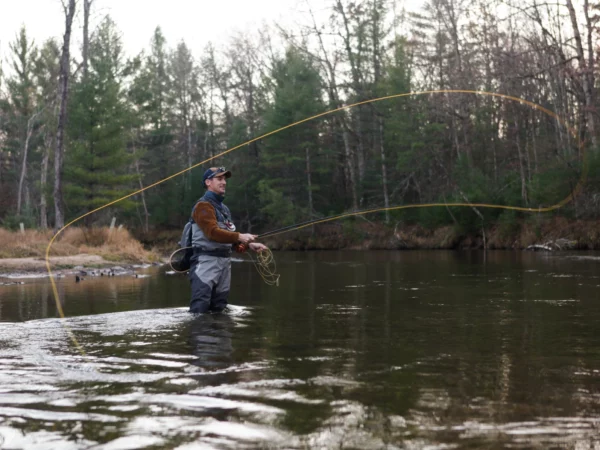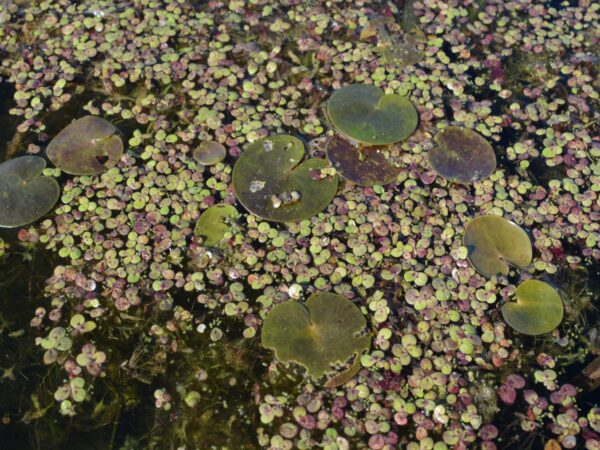
By Bernie Azure, Char-Koosta News
This article is part of a collaboration between The Char-Koosta News and Great Lakes Now at Detroit Public Television. Our partnership brings readers stories about issues of, research about and solutions to the invasive mussel problem – a challenge that’s shared by communities around Flathead Lake, its nearby waters and the Great Lakes.
The Char-Koosta News is the official news publication of the Confederated Salish and Kootenai Tribes of the Flathead Indian Reservation in western Montana that publishes articles and stories of interest to the tribal membership and the non-tribal people living on the reservation.
The name “Char-Koosta” is a combination of the names of the last two traditional leaders of the Salish and Kootenai Tribes. Chief Charlo was the last traditional chief of the Bitterroot Salish, and he was among the last 300 tribal people that were forcibly removed by army from their Bitterroot homelands in 1891 to the present-day Flathead Indian Reservation. Chief Koostahtah was the last of the traditional Kootenai leaders. The traditional leaders/chiefs were eliminated by the 1935 Flathead Nation Constitution, under the auspices of the Indian Reorganization Act.
It’s been kind of a half empty, half full aquatic invasive species (AIS) inspection effort this summer in Montana. There has been less watercraft inspected but a record number of mussel-fouled watercraft discovered. That’s not good but the fact that inspectors found them is good.
In 2020, 174,423 watercraft were inspected, and a then-record 35 zebra or quagga mussel fouled watercraft were intercepted. According to the latest AIS Bureau dashboard more than 107,000 watercraft inspected and 59 mussel-fouled watercraft found.
Montana Fish, Wildlife & Parks AIS Bureau Chief Tom Woolf said there were a couple of drivers affecting the drop in watercraft traffic from 2020 to this summer. Both summer recreation seasons were impacted by the COVID-19 pandemic. Last summer the watercraft recreationalist as well as other tourists were getting out and about to escape the pandemic locally and recreate outdoors away from the urban crowds. This year local and regional people are not recreating out of state as much as last year but are recreating closer to the home front.
“The inspection stations at Ravalli and Clearwater have seen a heck of a lot of local traffic this year,” Woolf said. Those two stations have been the leaders in inspection numbers for a number of years now. This year Clearwater has conducted nearly 30,000 inspections and Ravalli more than 16,000.
The latter reason — more local outdoor recreationalists has been proven on the Flathead Reservation where local and area outdoor recreationalist have flooded the campsites on the reservation, and squeezy out tribal recreationalist. According to Lake County Commissioner Bill Barron, since April approximately 3,100 new residents have moved to Lake County. The Tribes’ Fish, Wildlife, Recreation and Conservation Division is in the process of seeking a solution to address the issue.
Despite the lower out-of-state watercraft recreationalists numbers, there has been a major uptick of zebra and/or quagga mussel fouled watercraft detected.
The Wibaux inspection station on Interstate 94 near the North Dakota-Montana border has detected the most fouled watercraft. However, consistent staffing there has consistently been hard to maintain.
Woolf said staffing the inspection stations continues to be a challenge. Rural locations, low wages, the pandemic, wildfires and smoke, and employment opportunities elsewhere are key factors in staffing.
“It’s been a rough summer. COVID tripped us up. We had to shut down some inspection stations due to it,” Woolf said. “Staffing has been hard this year because of that and all the smoke. Pay is an issue. There are ‘Help Wanted’ signs everywhere in business windows. People can go anywhere and get a service job that pays more. McDonalds pays more than we do, more than we can.”
However, despite that the inspection stations staff have found a record number of mussel-fouled watercraft. Most mussel infested watercraft this year were found at the border-area stations but other further in-state stations have also found record numbers this year. The CSKT contract managed station in Ravalli has intercepted four mussel-fouled watercraft — a record there.
Woolf said getting local buy-ins from FWP contract stations as well as training and communication among FWP and its AIS stations, contract conservation district and tribal, and local government stations, and public information efforts has resulted in increased vigilance and professionalism at the statewide inspection stations.
“We are emphasizing the importance of partnerships and working closely with the tribal and conservation district stations and local government stations, providing better oversight, management and quality control,” Woolf said, adding that the Flathead and Blackfeet nations also are able to pay more because they partially fund their stations, and conservation districts can also pay a bit more because of local management oversight via a 10 percent administrative line item in their FWP contract budget. FWP is also working with Lincoln and Mineral counties in an effort for conservation districts or other such local entities to contract manage the Troy and St. Regis inspection stations. “Local partnerships are a key in this effort. We are hoping for some more local conservation districts taking over management of inspection stations. Local involvement is a good thing.”
Also, this year, the FWP has had members of its rotating staff spending time at the various inspection stations.
“We focused this year on visiting the stations, interacting with staff and reiterating protocols,” Woolf said, adding that it’s about fostering a partnership, about working together to ensure all inspectors are on the same page with the same mission of preventing an infestation of mussels in the Columbia River Basin, of which the Flathead River and Kootenai River basins in Montana are part of. The Kootenai River Basin is an international river basin that emanates in Canada’s British Columbia Provence.
Public outreach efforts are also keys to the prevention of a mussel infestation.
“Early detection is important. The statewide public awareness campaign has been working well getting the message out,” Woolf said. The FWP, CSKT, Flathead Basin Commission, conservation districts, local governments and the Upper Columbia Conservation Commission have all contributed to the public awareness efforts as have marinas and watercraft businesses. “The more eyes out there the better. When the public knows what to look for, knows their responsibilities or knows what questions to ask, the better off we are in this prevention effort. However, there are people out there that are still unaware of the aquatic mussels.”
Among the unaware are out of state water recreationalists. Woolf said the AIS Bureau is working with AIS prevention efforts in South and North Dakota, and the Army Corps of Engineers in spreading awareness. There are also outreach efforts to Midwest AIS folks and a budding effort with commercial watercraft businesses. The hitch in that effort is individual sales of watercraft and contracted transportation to or through Montana. There has been a sizable amount of mussel-fouled watercraft being commercially transported.
“There are people cooperating to make sure that this will be addressed, recognizing the importance of the preventing an infestation,” Woolf said. “We can never pack our bags and go home. A lot is at stake. We must stay vigilant.”
Vigilance resulted in the 2017 detection of mussel larvae in Tiber Reservoir southwest of Chester. As a result, FWP, in cahoots with the Flathead Lake Biological Station and Bureau of Reclamation conducted a five-year monitoring and inspection effort on the reservoir. Since then, no signs of mussels have been detected.
In October there will be another sampling effort that includes FWP underwater divers doing a fine-tooth search for mussels. Mussel-sniffing dogs will be used for dewatered areas of the reservoir. Following that a report will be made and forwarded to FWP Director Hank Worsech. If no mussels are detected a public comment period will then follow. Once that is done Worsech would in all likelihood sign off on the report that would end the intense monitoring and declare the Tibor Reservoir is mussel-free.
Catch more news on Great Lakes Now:
If it’s summerish time, it’s mussel time
Cost of a quagga and zebra mussel infestation
Featured image: Invasive mussels are covering shipwrecks in the Great Lakes. From the Milwaukee PBS program “Shipwrecks of Milwaukee.”




